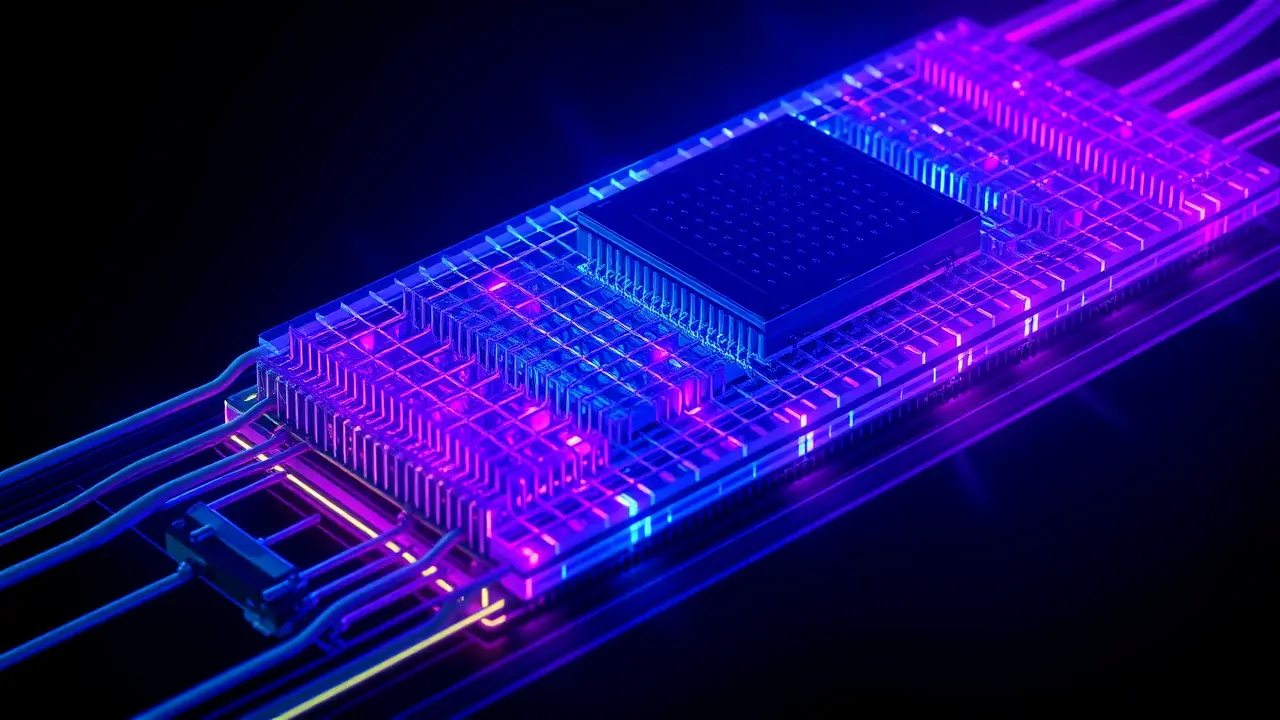
AIchips & hardwareAI Data Centers
Startup's Metal Stacks Solve AI Heat Problem
DA
1 month ago7 min read4 comments
The relentless march of artificial intelligence is hitting a formidable, physics-based wall: heat. As large language models and complex neural networks grow in parameter count and computational demand, the energy required to train and run them generates immense thermal output that traditional air-cooling solutions can no longer effectively manage.This thermal management crisis threatens to throttle the very progress of the industry, creating a bottleneck where computational ambition is literally melted by its own byproduct. It is within this critical context that the innovation from Alloy Enterprises emerges not merely as an incremental improvement, but as a potential paradigm shift in hardware infrastructure.Their novel additive manufacturing technique, a specialized form of 3D printing for metals, allows for the creation of intricate, high-performance liquid cooling plates that can be integrated directly into the very structure of server components. Unlike conventional manufacturing, which might struggle with the complex internal geometries required for optimal fluid dynamics and heat exchange, this approach enables the fabrication of cooling pathways with unprecedented complexity and efficiency, bringing targeted, powerful liquid cooling to new parts of the server rack, including processors, memory, and networking hardware that were previously cooled by less effective means.The core of the problem lies in the density of modern AI compute clusters; thousands of GPUs running in parallel in a data center generate heat densities that rival the surface of the sun on a per-square-inch basis. Liquid cooling, with its superior heat capacity and thermal conductivity compared to air, has long been the proposed solution, but its adoption has been hampered by cost, complexity, and the engineering challenge of applying it beyond the primary CPU or GPU die.Alloy's method appears to elegantly sidestep these hurdles. By using a proprietary binding jetting process to build metal parts layer by layer, they can embed micro-channel cold plates and heat exchangers with conformal geometries that perfectly match the heat profile of a specific chipset, maximizing surface area contact and thus thermal transfer.This is not unlike the evolutionary leap from simple, single-celled organisms to complex, multi-organ systems; the cooling is no longer a bulky, external appendage but an integral, optimized part of the computational organism's anatomy. The implications are profound.For data center operators, this technology promises a significant reduction in Power Usage Effectiveness (PUE), a critical metric for efficiency, as less energy would be wasted on running massive fans and air conditioning units. This translates directly to lower operational costs and a reduced carbon footprint, a growing concern for an industry whose energy consumption is increasingly under scrutiny.
#featured
#additive manufacturing
#liquid cooling
#server racks
#heat management
#AI hardware
#thermal solution
#Alloy Enterprises
Stay Informed. Act Smarter.
Get weekly highlights, major headlines, and expert insights — then put your knowledge to work in our live prediction markets.
Comments
Loading comments...
© 2025 Outpoll Service LTD. All rights reserved.